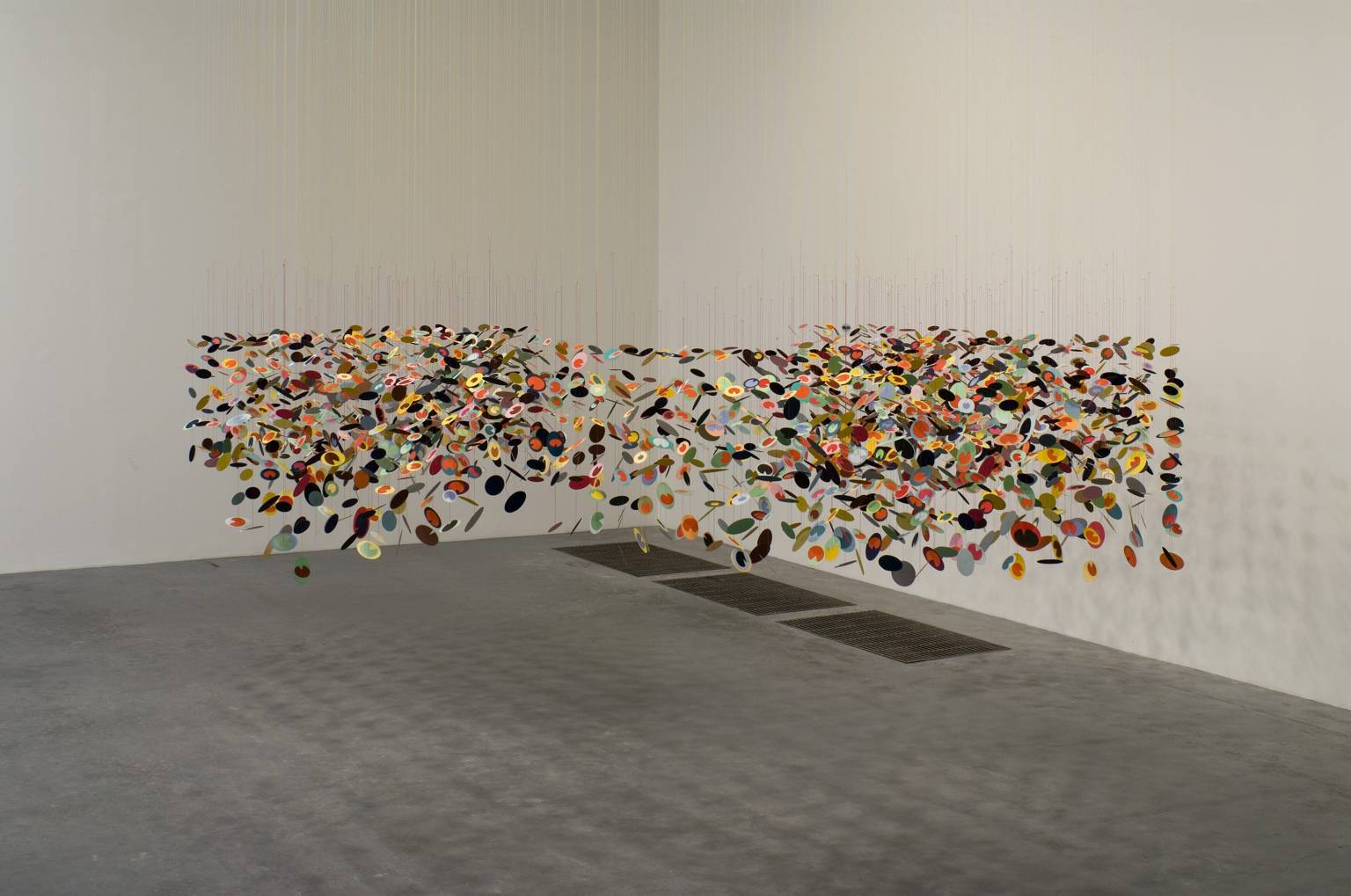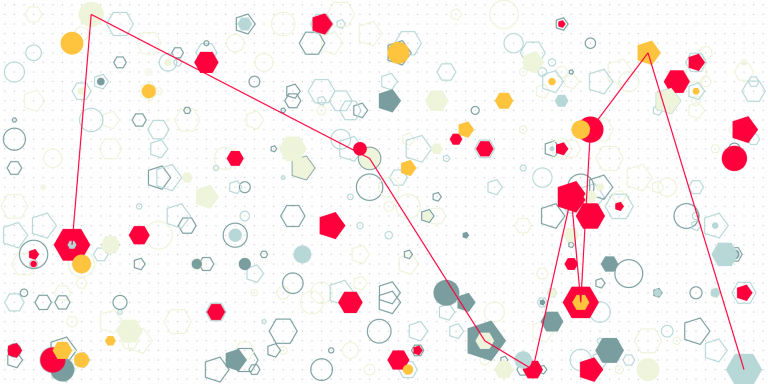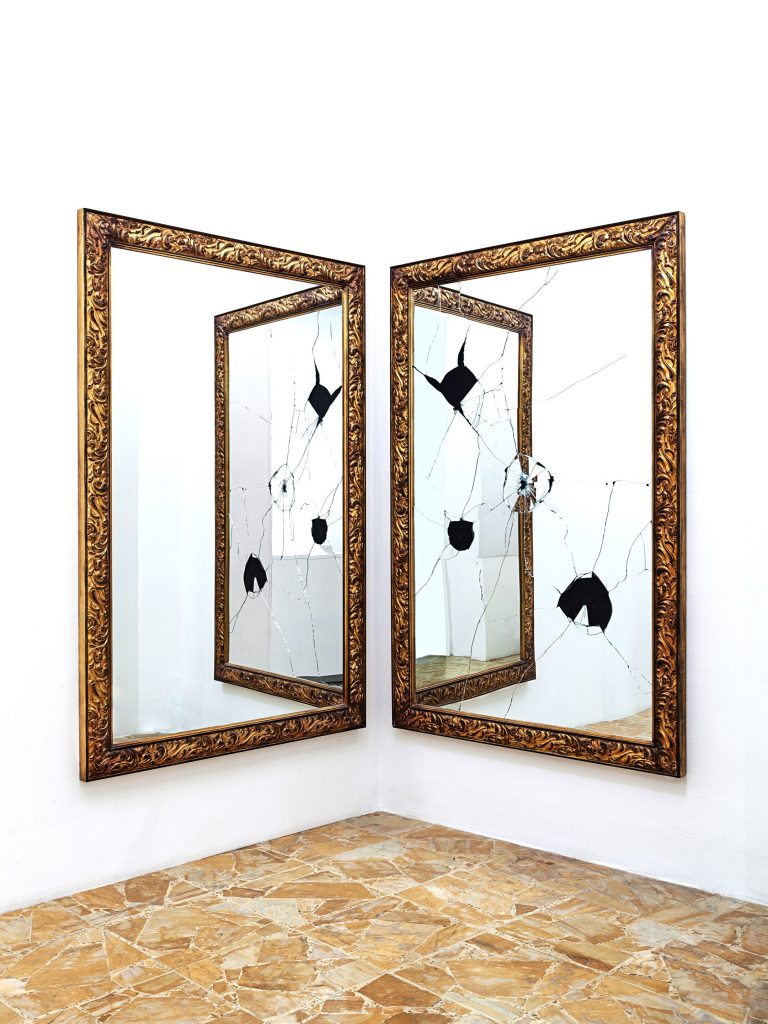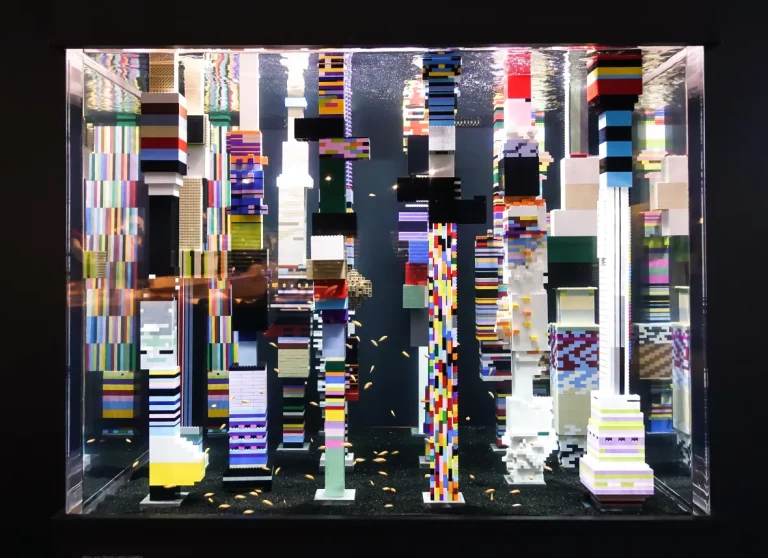Hybrid Definition Networks and Their Role in Innovation

A Hybrid Definition Network includes definitions for two types of concepts: (i) so-called old concepts having their default definition, from a dictionary or other accepted (and stable) source, and (ii) new concepts, those that have a plastic definition, which is intended to change to reflect how these new ideas are refined through an innovation process. Note that new concepts may have new names, i.e., neologisms, but this is not necessary. As I discussed in another text, here, you can have a new concept that carries a familiar name (e.g., “service”) and yet you made it refer to something that is different from the default, dictionary meaning of “service”.
What are Hybrid Definition Networks? Who makes them, and why? Why is it interesting to analyze and improve them? I argue in this text that teams tasked with innovation – the invention of new ideas and things, and the transformation of these into something useful for others – always create new terms in order to communicate about, and coordinate when working on new ideas.
The analysis of a Hybrid Definition Network is relevant if we are interested in how innovation is done and in how to improve innovation processes.

Say that again?
We’re gonna use the best pointing device in the world. We’re gonna use a pointing device that we’re all born with – we’re born with ten of them. We’re gonna use our fingers. We’re gonna touch this with our fingers. And we have invented a new technology called multi-touch, which is phenomenal. It works like magic.” [3]
The quote is from Steve Jobs’ 2007 MacWorld keynote. He was introducing the first generation iPhone. This was the official start of a product line which, many years later continues to shape communication, work, and entertainment of more than a billion people.
At that time, few had a notion of what he might have meant by “multi-touch”, “swipe”, ”home button”, ”you can touch your music”. Most of the audience was seeing the first iPhone for the first time. As he was demoing it, it became clearer what he meant by these terms.
Why did he use these new terms? The reason should be obvious. He was showing something new. Isn’t it also evident that he had to have new terms to talk about it? It certainly seems right that new ideas and things merit new names, and as a result, we must extend whichever language we use with these new terms.
What role do new terms play in innovation processes? How do we create them? How can we analyze them, to help us progress in innovation?
When doing innovation, we create new words and phrases to talk about new ideas and things that we are creating.
While I was not involved in innovation processes that led to the first iPhone models, I did have such roles in many others over the last decade in various companies.
That work led to the following seemingly simple observation with interesting implications: Each time, teams which did innovation, also made and spoke their own new language, pieced together from a general-purpose language, relevant technical languages, and new terms. These new terms were needed to communicate about new ideas created, changed, and thrown away during the team’s innovation process.
If we take that observation seriously, then it must be possible to learn something more about how innovation is done, and how it could be done, by looking more closely at the terms that teams use to communicate about, and coordinate around new ideas. Hence the notion of Hybrid Definition Networks and Plastic Definition. Both are trying to capture artefacts created during innovation, and which I highlighted in the observation above. Teams speak a language that mentions old terms and new, the latter reflecting their new ideas, and there are relationships between these terms. Hybrid Definition Networks are there to capture relationships between terms, themselves due to relationships between the old and new concepts, while Plastic Definition reflects the observation that some concepts will change during innovation, and they are different from those that remain stable.
How to Spot New Terms in the Field?
New terms are an artefact of an innovation process, in the sense of being something made and changed throughout that process.
It does not matter how exactly they were made: it could have been accidental or intentional, created in methodical or messy ways. But, my claim and premise is that new terms are made every time innovation is done, as long as innovation requires collaboration; it certainly did happen in all innovation processes I was involved in. You can test this yourself, that is, if people use new terms to talk about new ideas and things.
If you are doing innovation, ask someone from outside your team to join a typical team meeting, and ask them how much of what was said they understood. Was there any word or phrase that was new to them, and if so, are these not already in an established technical language? If not, they are part of your team’s NCN. Alternatively, were there old words and phrases, but which are used with a new meaning?
If you are not a participant, ask to sit in a few meetings of the innovation team. Ask yourself these same questions. There will be ideas you understand roughly just like everyone else, and much of that would be communicated through the base language, the general-purpose language such as English, French, or other, that you and they all speak. Then, there will be established technical terms and phrases, which rely on, and convey information and knowledge that both them and you (as well as others) have, or can have access to. But then, there will be new words and phrases, with their own definitions, which do not exist as such outside that innovation team – this is what makes a big part their innovation language (but not all of it, as I will explain later); if these add-ons, to the language they use anyway, is lacking, how could they possibly be using old language to talk about new ideas and things?
Why Are There New Terms?
New terms are made for two reasons at least; one, it is a tool for communication between those involved, and therefore critical for their coordination, and in turn, it must influence how innovation processes unfold; two, it reflects these people’s intentions, assumptions, and knowledge about the new ideas and things they work on, and relationships with old ideas and things, telling us about what is, and is not new in the outcomes of innovation.
To work together, we have to coordinate, and we can only coordinate through communication. This, in turn, forces us to create terms with which we can refer, or talk about, ideas and things. For most obvious things, and many ideas which are, so to speak, common knowledge, we already have natural language and its broad terminology.
But how can we use old terms to refer to something new? We can use them: either by redefining them, or else it will be confusing. In the former case, when we redefine, old terms remain syntactically the same, but their meaning has changed, and so we are mistaken to think that we are still using the same language. Either way, coordination around new ideas and making new things together will inevitably lead those involved to create extensions of the underlying general-purpose language (English, French, and so on), that they use for communication – there will be new nouns, new verbs, new adjectives, and they will have plastic definitions.
Why Think More About Hybrid Definition Networks?
Many artefacts are made in an innovation process. There will be documents written, technical drawings made, messages exchanged, calls made and recorded, scale models made, and so on. We do this towards consensus on what needs to be done next, be it more design, prototyping, development, manufacturing, or other.
These artefacts act as a record, however partial and imperfect, of the actions we have taken, themselves the outcome of our joint decisions and design interactions, them, in turn, guided by the ideas we had and have, shaped by context, and communication and action of others.
A substantial amount of thought and effort, both in academic research and perhaps more in business-oriented research and development, has gone into the design, analysis, and testing of the right structures of these artefacts. The question there is: What template should an innovation team use, when solving this or that problem that regularly pops up as they do innovation?
There is a lot of sense in searching for, designing, and testing such templates, be they for processes and tasks, or for keeping records of what was done, and for planning what to do next.
The basic motive is that, if you learn the rules once, then you don’t need to learn them again. From everything that you need to learn to reach consensus, on a given project, at least you know the rules for reading and making some of the artefacts which record design decisions. You might choose to disagree about the content, but at least you know where to look for it, and how to read it. You know the rules that define the structure of the artefact.
When you study architecture, industrial design, civil engineering, software engineering, management, or one of many other fields, part of the effort goes into learning rules on how to read and produce such artefacts, so that they fit standardized or well-established practices.
But even if you know the rules for making and reading the artefact, you still need to know how to read its contents. If you give me two architectural blueprints, one for a family home, another for a hospital, my interpretation of these will depend on the extent to which I was exposed to ideas about the former, and about the latter. It will, evidently, also depend on the knowledge which applies to both, say, something I might have studied as a student of architecture. But each project is different.
The problem I am interested in, and which motivates looking more closely at Hybrid Definition Networks, happens before we make any artefacts, and persists while we do the design of the thing that the artefacts are about, and lives as long as we remain interested in improving the design.
The problem happens, for the first time, as soon as I need your help, and I need to explain to you what it is that I’m thinking to design with you.
If you think about this in terms of artefacts made during design, blueprints, specifications, documentation, and so on, the problem is not to select or make the right structure for them, but what to fill them with – the content, substance that these artefacts need to contain.
This problem is particularly interesting when doing design, or innovation more generally, because the ideas will be new to you. They would not be my references or allusions to something you and I have learned in the past, in roughly the same way, e.g., arithmetic, geometry, especially if it is precisely defined and the definition is widely shared.
Instead, these ideas will be something that you need to learn from me about. At the same time, since new ideas will not be definite, polished, and complete, you may have yours, which come to change mine, as we collaborate during design, inventing and innovating together.
The problem can be rephrased as the following question, which is the central motive for being interested in innovation languages in the first place:
In innovation, when ideas are new, incomplete, unfinished, brittle, how can I be precise, accurate, and clear about them, so that I can convey them to you, that we can reach consensus on what innovation is about, and that you can then help me replace these ideas with better ones?
Phrased otherwise, How can I be precise, accurate, and clear about the unstable content of innovation? And if I were, Would this help us reach consensus faster?
This is not the classical problem of what meaning is and is not, in general or of specific notions. It is not about how to convey any kind of ideas, in any situation. It is about new ideas, and they are different from stable ones. In many situations, for stable ideas, it is simply not the place or time to debate them much, since they proved to work in the past. If they worked for you, and you have no effort to invest in trying to improve them, then they will not change. This is not to say that they will remain stable forever, but their stability is testament to their past relevance.
For most children, when they start to learn natural numbers, it is not the point to debate if Peano axioms are good enough a definition; they can do plenty without bothering with it (or any simpler definition they were given). But innovation is a process in which ideas need to be short-lived. They are by definition changeable, since the earliest ones are unlikely to be the best; not because they were perfect and killed by premature criticism, but because they have come up at a time when the person who had them, simply knew less about the problems, situations, and people these ideas should relate to.
This is also not a question of how you arrange the innovation process. Whichever activities it has, however these may be arranged over time, they operate on the content, the substance of innovation, those ideas that each of us has, and which we need to confront, rethink, replace, until we have converged to a consensus that we should take the next step, of taking action which is no longer about the change of ideas, but about the bending of the world to these ideas, be it only by stopping the design of the bicycle I mentioned above, and arranging its manufacturing.
To summarize, new ideas are necessary for invention, and therefore, for innovation. But new ideas are in individual minds, and cannot, as-is, be carried between them. Daniel Sperber, a linguist, puts this nicely on two separate occasions.
”Just as the human mind is not a blank slate on which culture would somehow imprint its content, the communication process is not a xerox machine copying contents from one mind to another.
[Mechanisms] of human communication [are] much more complex and interesting than is generally assumed, and much less preservative and replicative and more constructive than one might think: understanding involves a lot of construction, and not just reconstruction, and very little by way of simple replication.” [1]
”[Communication] is not a replication system. When I communicate to you, you don’t get in your mind a copy of my meaning. You’ll transform it into something else. You extract from it what’s relevant to you. It involves both understanding and misunderstanding. But even if you’re understanding me perfectly, your goal will not be to have a copy of what was in my mind, it will be to extract from it some thoughts of yours which will have been usefully informed by mine, but which will be relevant to you.” [2]
So we cannot work together unless we communicate these ideas. What’s more, we cannot communicate these ideas; we can communicate about them. If people need to collaborate in invention and innovation, their communication will lead each of them to keep or replace her own ideas.
How can we do this faster while remaining relevant, this process of aligning, diverging, replacing, then aligning again, diverging again, replacing again, and so on?
One part of the answer is about methods, processes, tasks, that is, how we do invention and innovation; another is how you structure the outputs processes, which is about the structure of artefacts you make. The third part, intertwined with the two others, is the content that the process manipulates, and that the artefacts structure and document, and what needs to be done about that content, for the sake of speed and relevance.
As soon as you think about that content, and because of the fact that it needs to be communicated, then you also need to look at the terms which are used to express, convey, represent it. I use Plastic Definition and Hybrid Definition Networks as tools to look at that content, and it is only because of arguing how that content needs to be that I go into processes and artefacts.
An unavoidable present problem is that the content of innovation is not tangible. It is not text, it is not drawings, it is not specifications, and it is not the innovation process; it is precisely the ideas of participants, each hidden away and inaccessible to others – they are the content, and the only way to do something about them is through material proxies, Plastic Definitions and Hybrid Definition Networks being two kind of those.
References
- Dan Sperber. An Epidemiology of Representations – A Talk with Dan Sperber. 2005. url: https://www.edge.org/conversation/dan_sperber-an-epidemiology-of-representations
- Dan Sperber. The Function of Reason – A Conversation With Dan Sperber. 2017. url: https://www.edge.org/conversation/dan_sperber-the-function-of-reason
- Mic Wright. The original iPhone announcement annotated: Steve Jobs’ genius meets Genius. 2015. url: https://thenextweb.com/news/genius-annotated-with-genius





